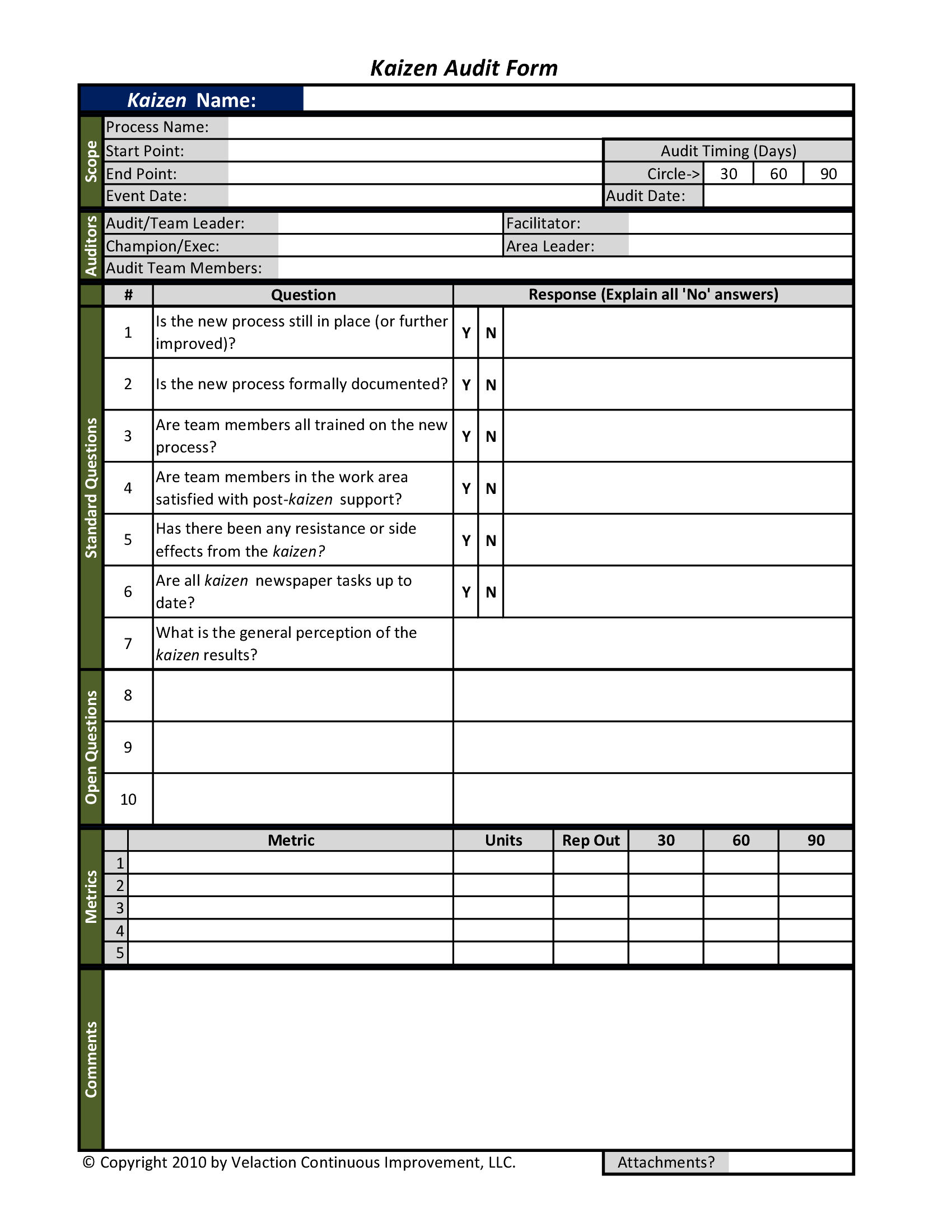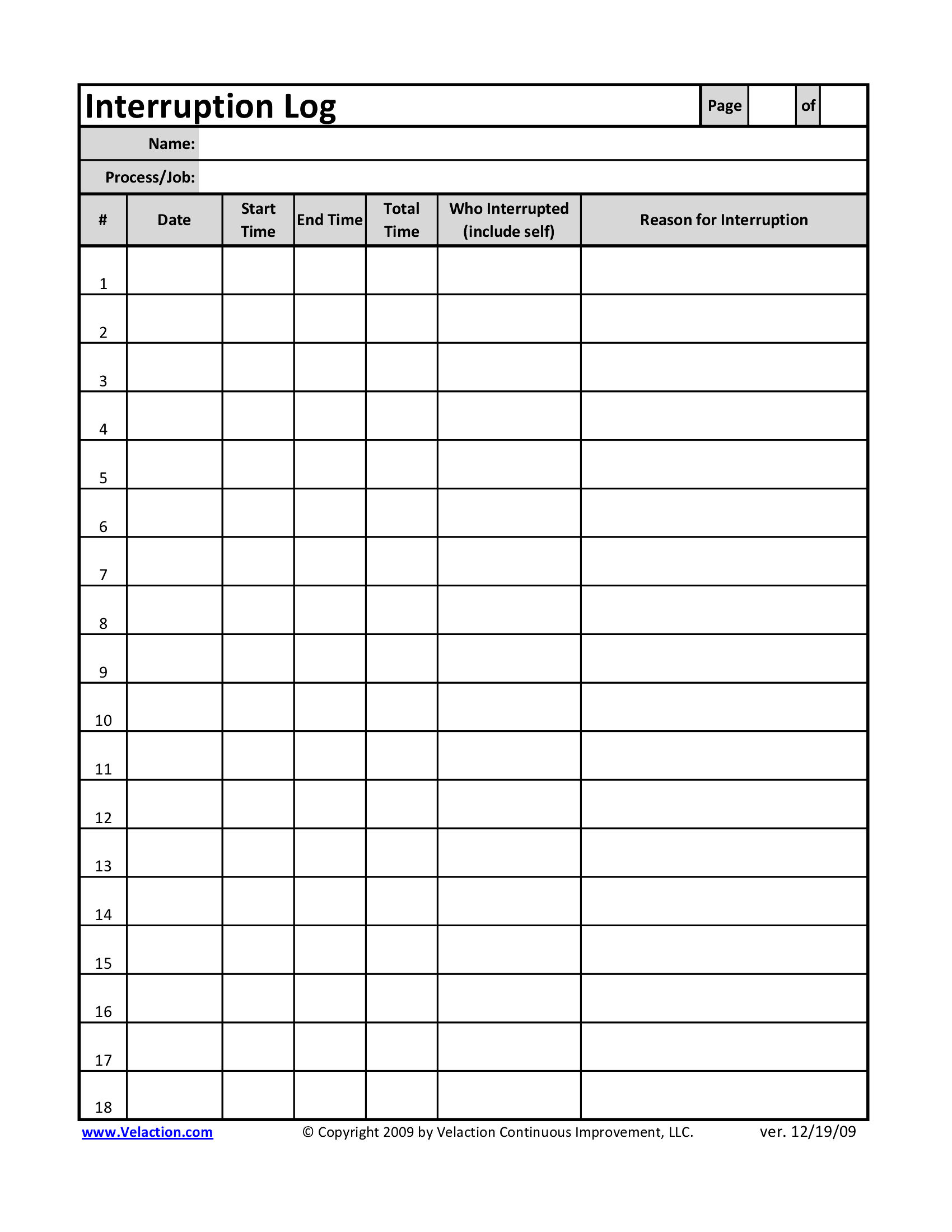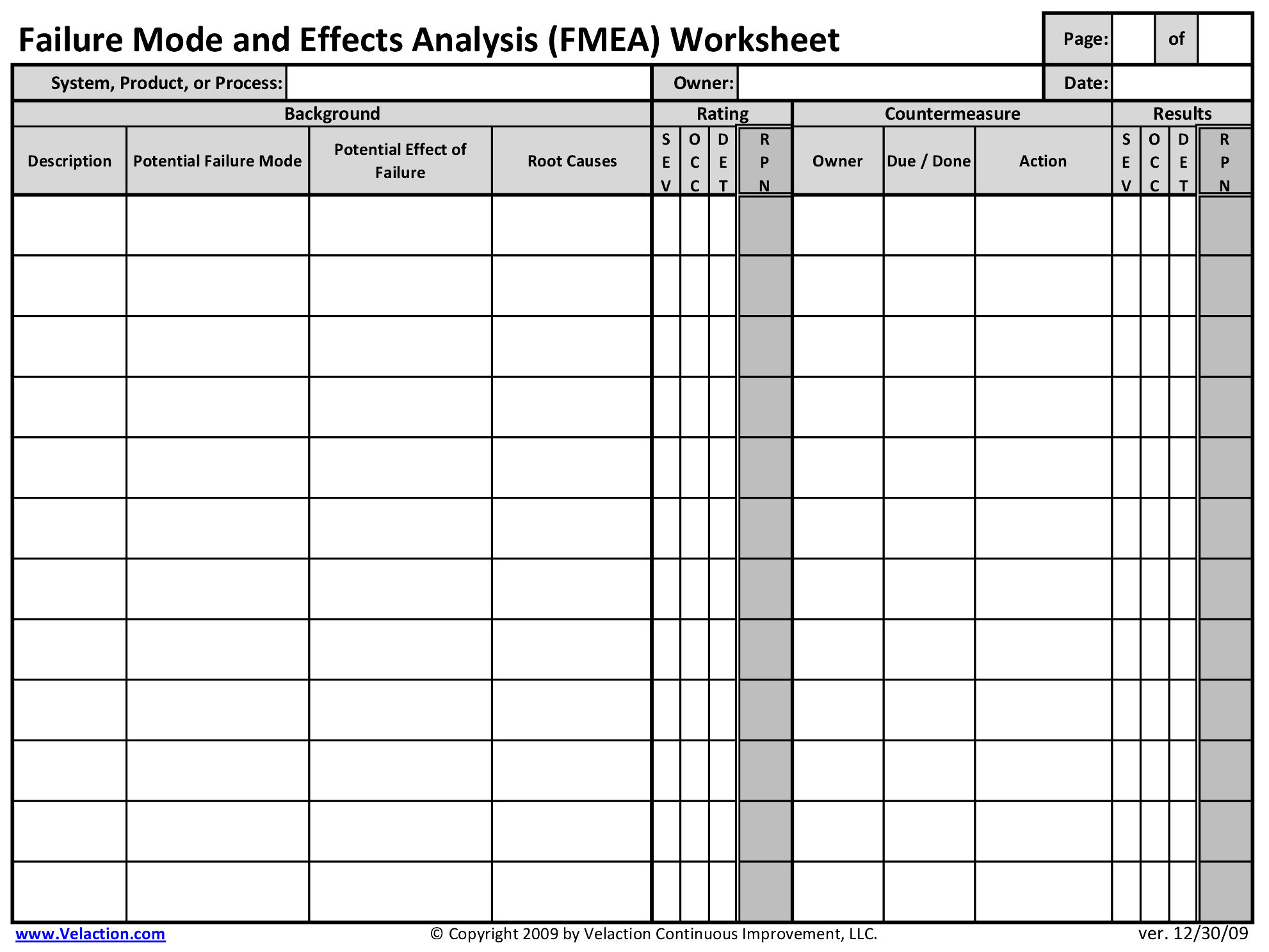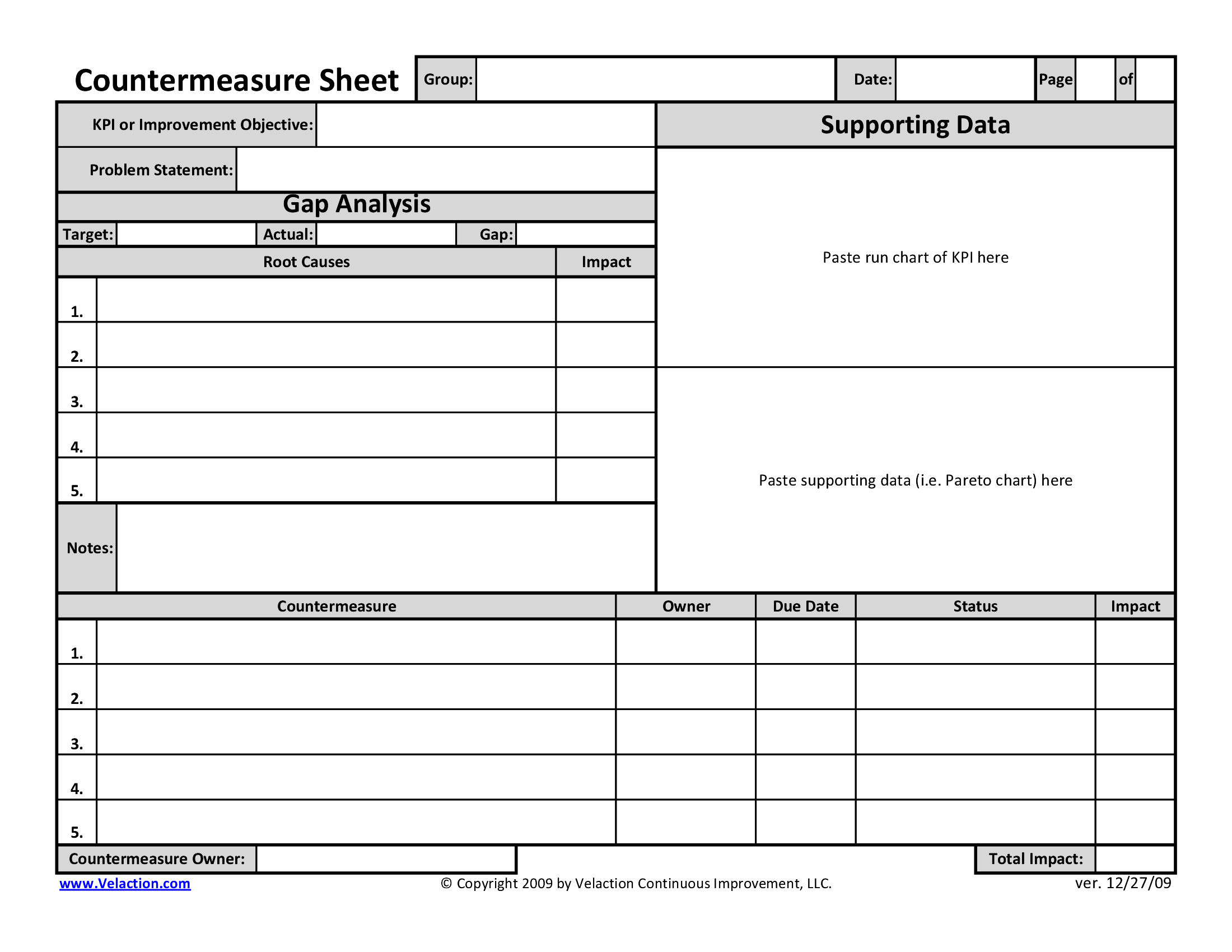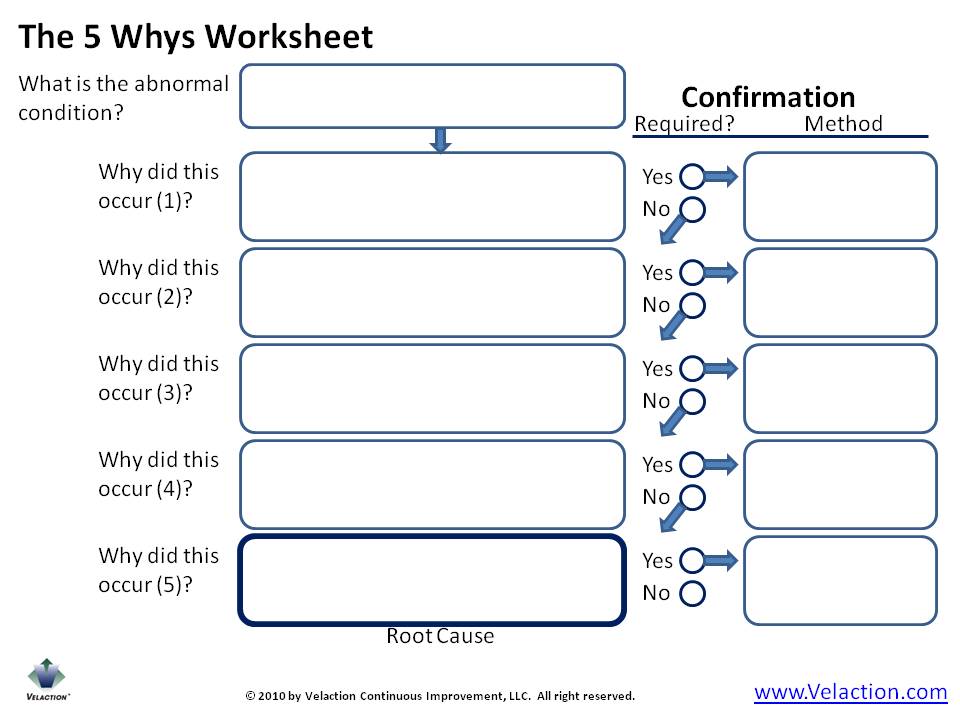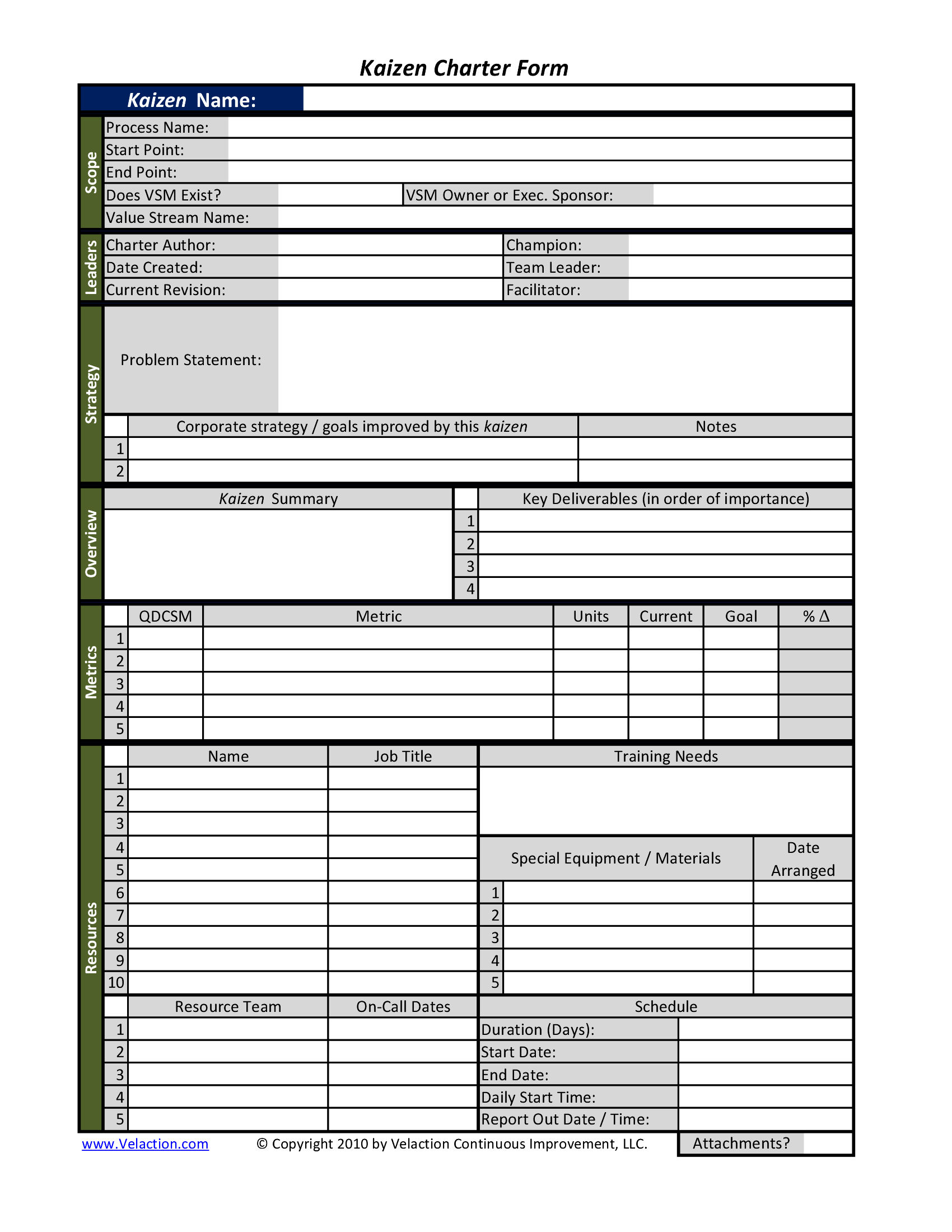Kaizen Audit Form
The Kaizen Audit Form is one of the sustaining tools used to lock kaizen gains in place. It is very easy to backslide after a project when there is no process in place to keep people from reverting to old methods of work. Get Our Kaizen Audit Form for FREE The Kaizen Audit Form records the results of the 30, 60, and 90-day audits. The review team should consist of the original leadership of the Read more…
